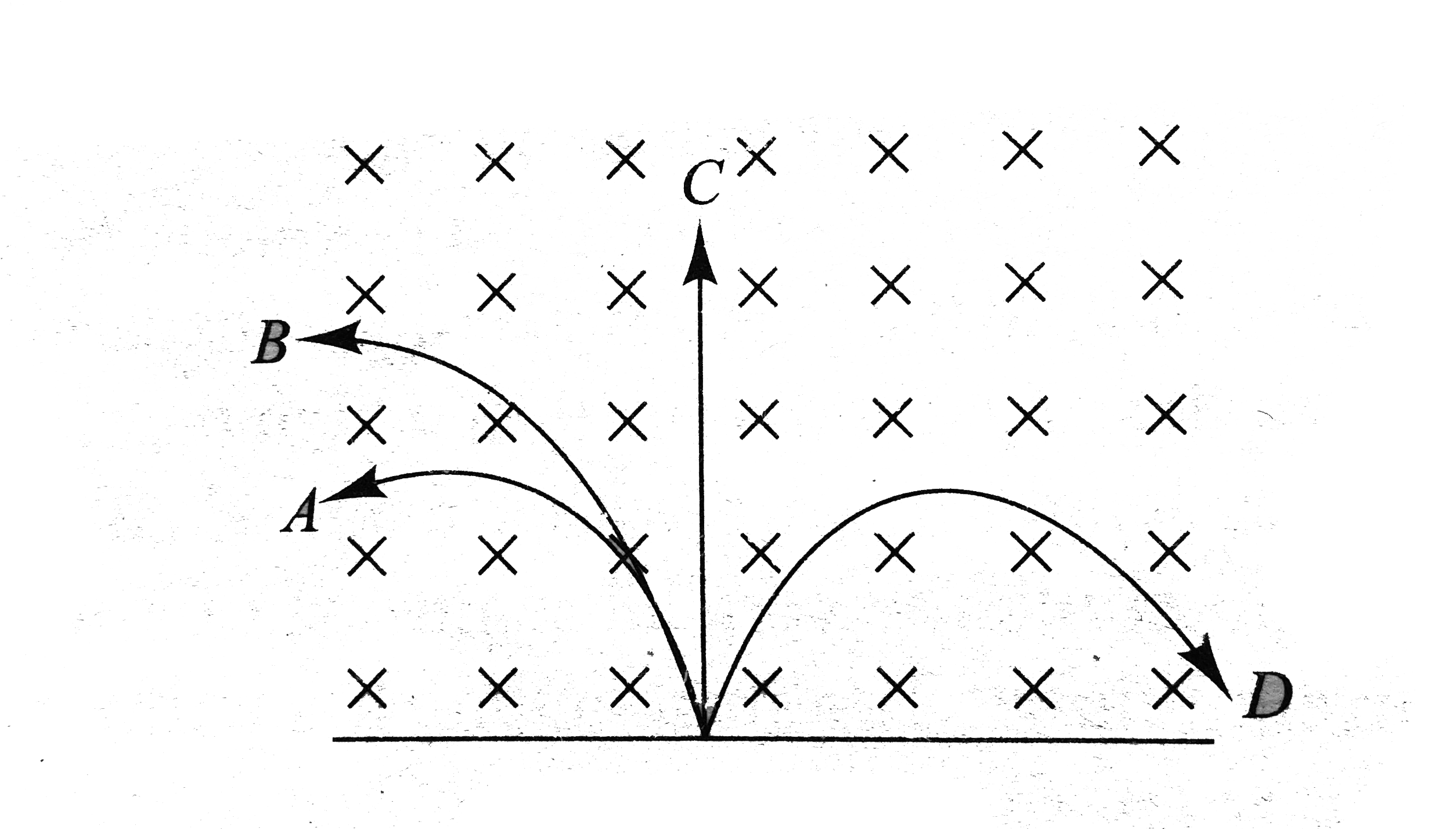A proton, an electron, a neutron, an α-particle and an unknown particle enter a region of magnetic field with equal momental. Figure shows paths (market 1 to 5) followed by these particles. Identify which path corresponds to which particle

The particle going straight (path3) must be a neutron. You can check from →F=q(→v×→B) that particles deviating upwards are negatively charged and particles deviating down are positively charged. Now, r=pqB⇒r∝1q, as momentum is same for each particle
⇒ Path 4 and 5 correspond to proton and α-particle respectively. Also 2 corresponds to electron as 4 corresponds to proton. (Why?)
⇒ Unknown particles is negatively charged (obviously with charge more than that on electron), so if follows path of smaller radius
⇒ Path 1 and path 2 correspond to unknown particle and electron respectively
Topper's Solved these Questions
- MOVING CHARGES AND MAGNETISMBOOK - AAKASH INSTITUTE ENGLISHCHAPTER - MOVING CHARGES AND MAGNETISMEXERCISE - Illustration
14 Videos
- MOVING CHARGES AND MAGNETISMBOOK - AAKASH INSTITUTE ENGLISHCHAPTER - MOVING CHARGES AND MAGNETISMEXERCISE - Try Yourself
27 Videos
- MOVING CHARGE AND MAGNESIUMBOOK - AAKASH INSTITUTE ENGLISHCHAPTER - MOVING CHARGE AND MAGNESIUMEXERCISE - SECTION D
16 Videos
- NUCLEIBOOK - AAKASH INSTITUTE ENGLISHCHAPTER - NUCLEIEXERCISE - ASSIGNMENT (SECTION-D)
10 Videos
Similar Questions
A proton, a neutron , and an electron and an alpha particle enter a region of constant magnetic field with equal velocities . The magnetic field is along the inward normal to the plane of the paper . The tracks of the particles are labelled in fig. the electron follows track .... and the alpha particle follows track.....

View SolutionAn electron, a proton, a deuteron and an alpha particle, each having the same speed are in a region of constant magnetic field perpendicular to the direction of the velocities of the particles. The radius of the circular orbits of these particles are respectively Re,Rp,Rd and Rα It follows that
View SolutionAn electron, a proton, a deuteron and an alpha particle, each having the same speed are in a region of constant magnetic field perpendicular to the direction of the velocities of the particles. The radius of the circular orbits of these particles are respectively Re,Rp,Rd and Rα It follows that
View SolutionA neutron, a proton, an electron and an α−particle enter a region of uniform magnetic field with equal velocities. The magnetic field is perpendicular to the paper and directed into it. The tracks of particles are labeled in Fig. 1.132. The neutron follows the track

View SolutionA neutron, a proton, an electron and an alpha particle enter a region of constant magnetic field with equal velocities. The magnetic field is along the inward normal to the plane of the paper. The tracks of the particles are lebelled in Fig. The electron follow track......... and the alpha particle follow track..........

View SolutionA neutron, a proton, an electron and an alpha particle enter a region of constant magnetic field with equal velocities. The magnetic field is along the inward normal to the plane of the paper. The tracks of the particles are lebelled in Fig. The electron follow track......... and the alpha particle follow track..........

View SolutionA proton and anα-particles enters in a uniform magnetic field with same velocity, then ratio of the radii of path describe by them
View SolutionA proton, a deuteron and an α-particle with the same KE enter a region of uniform magnetic field, moving at right angles to B. What is the ratio of the radii of their circular paths ?
View SolutionA proton and an alpha particle projected with same velocity in uniform transverse magnetic field then
View SolutionA charged particle enters in a magnetic field B with its initial velocity making an angle of 45° with B. The path of the particle will be
View Solution
